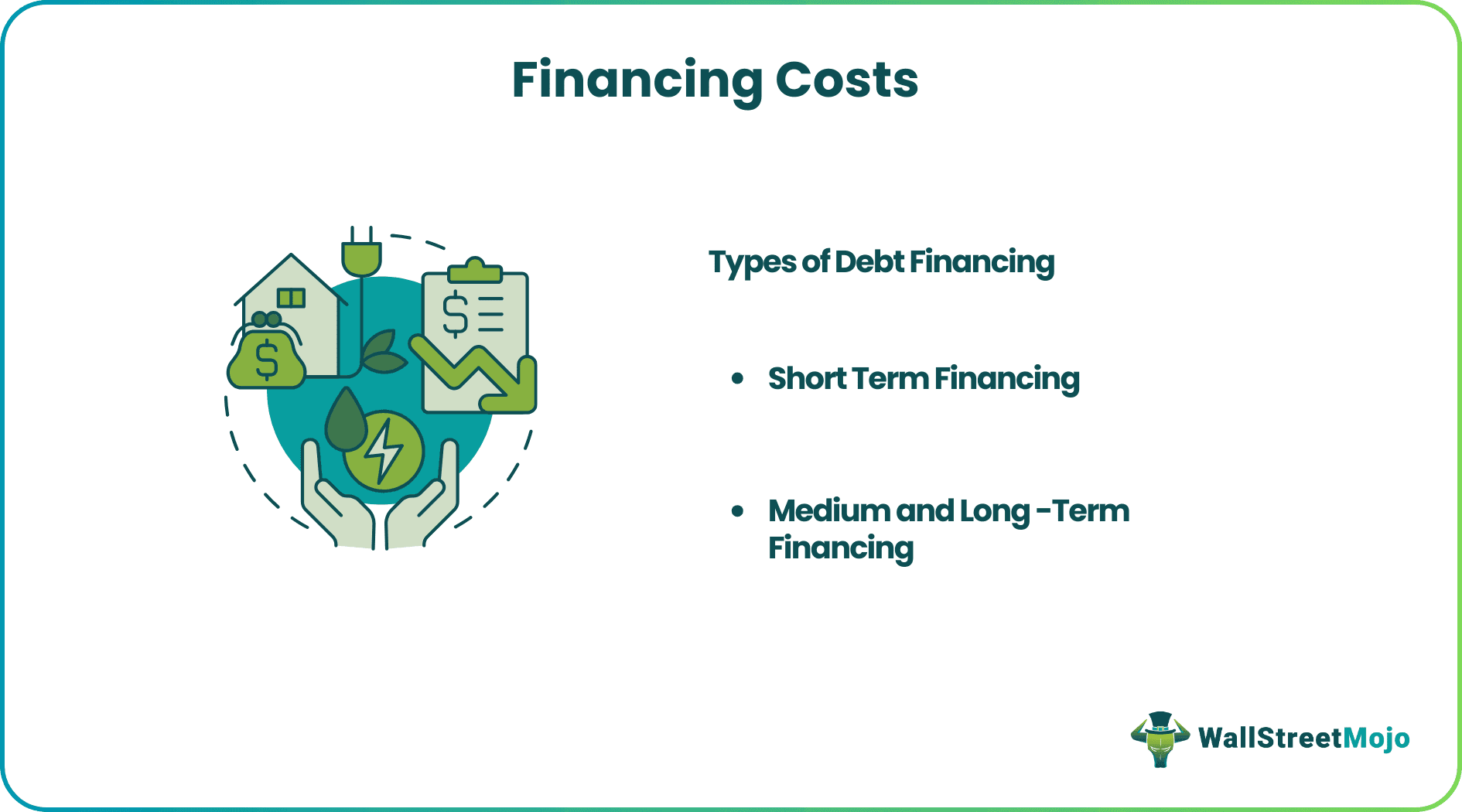Table Of Contents
Financing Costs Definition
Financing costs are defined as the interest and other costs incurred by the Company while borrowing funds. They are also known as “Finance Costs” or “borrowing costs.” A Company funds its operations using two different sources:
- Equity Financing
- Debt Financing
None of the financing comes free for the Company. Equity investors require capital gains and dividends for their investments, and debt providers seek interest payments.
Finance costs, however, refers to the interest costs and other fees given to debt financers. Interest expense can be on both short-term financing and long-term borrowings.
In broader terms, borrowing costs include the following costs other than the interest costs:
- Amortization of discounts and premiums based on the borrowings of the Company
- Amortization of other costs incurred which are related to borrowings
- Foreign exchange differences and fees when the borrowings happen in foreign currency
- Finance charges concerning the financial leases
Consider the Income Statement of Colgate Palmolive
Below we note that the financing cost of Colgate was $143 million and $102 million in 2018 and 2017, respectively.

Source:- Colgate
Types of Debt Financing
Let us see various costs included in different types of debt financing:

#1 - Short Term Financing
Short term financing includes bank overdraft. A bank overdraft includes an annual maintenance charge, plus interest on the drawn amount and fees on the non-utilization of funds. The interest charges vary and increase if the risk to default increases. A higher rate and fees are charged if the unauthorized facility of limits is utilized.
Business credit cards are used for short-term financing. They include annual fees and interest if the payment is not made on time. If the credit card holder pays the fees on time, no interest is charged, and only maintenance fees will be charged on the same.
Trade credits are very common in businesses. Trade credit involves selling goods and services on credit. Although the seller charges no direct interest or fees, they tend to include the borrowing costs in the cost of goods sold by selling at a higher price. Businesses usually discount if payment is made early, and the buyer tends to lose the facility if purchased on credit.
#2 - Medium and Long-Term Financing
The direct cost of long-term and medium-term financing is in charge, and fees are usually taken by the bank when the loan is applied. While the loan application fee is the same, the interest rate charged varies according to the risk profile. It may include if the loan is a secured or unsecured loan and type of assets put as collateral in case of a secured loan.
Companies lease a lot of machinery to make it an asset-light model for their business. The cost of hiring/renting includes monthly lease payments, which cover depreciation, maintenance, and other capital costs. Leasing rates depend on the tenure, cost, and type of asset leased. Assets that have higher resale value will have lower lease rates while those with a lower resale value will have a higher resale rate.
Calculation of Financing Cost with Examples
Usually, borrowing costs are calculated using the Annual Percentage rate (APR). Usually, interest rates for finance costs are not published by the Companies. Hence the investors use the following formula to calculate financing costs:
Formula of Interest
However, this method seems easy and simple. It has flaws as it does not consider the time to pay the loan.
Let us consider that a Company took a loan of $10,000 and paid $11,000 in 3 months.
Calculation of Interest

Interest cost using the above formula is 10%.
However, if the same is annualized and compounded, it is 46%.
While calculating finance costs is one method to analyze the Company, mainly investors are interested in the Company that can service its debt. Hence, they are interested in the Interest Coverage Ratio.
The interest coverage ratio for the Company can be calculated as

= 3607 /143
Interest Coverage Ratio = 25.22
Important Points about Borrowing Costs
- Financing costs may be a big cash outflow for some highly leveraged companies. Thus, investors and analysts keep a check on the changes in the finance costs of the Companies.
- Decreasing Borrowing costs indicate that the company can generate enough cash and income to service its debt and pay timely installments.
- Increasing finance costs would mean that the company has taken additional credit facility and the purpose of such financing should be analyzed.
- Highly leveraged companies may find it difficult to pay off the debt on time and structure their debt or convert debt into equity for the creditors.
- The investors analyze any change in financing costs and seek questions on structural and operational changes happening in the Company, which led to a change in finance costs.
Conclusion
Any financing requires the Company to reward the financiers. It includes interest payments and fees the company pays the creditors for taking on short-term or long-term financing facilities. Equity holders need dividends and capital gains, whereas creditors require fees and interest payments.
